

Matt Campbell
2026 MG U9 review
3 Hours Ago

Contributor
Skoda has released a wave of new details for its next-generation Kodiaq SUV, which will be larger than the current model and offer a range of electrified powertrains – including a plug-in hybrid (PHEV) with 100km of range.
The second-generation Kodiaq will offer four engine options in Europe, including mild-hybrid and plug-in hybrid options – a first for the nameplate that spawned Skoda’s assault into the SUV market.
Skoda says it will reveal the Kodiaq entirely sometime between September and November 2023, with European deliveries likely to commence before the end of the year. It’s expected to launch in Australia around mid-2024.
“We don’t have a real big delay in the new car at all. It’s just a typical homologation lead time we have, so six to nine months should be sufficient – and then we have it here,” Skoda Australia managing director Michael Irmer told CarExpert.
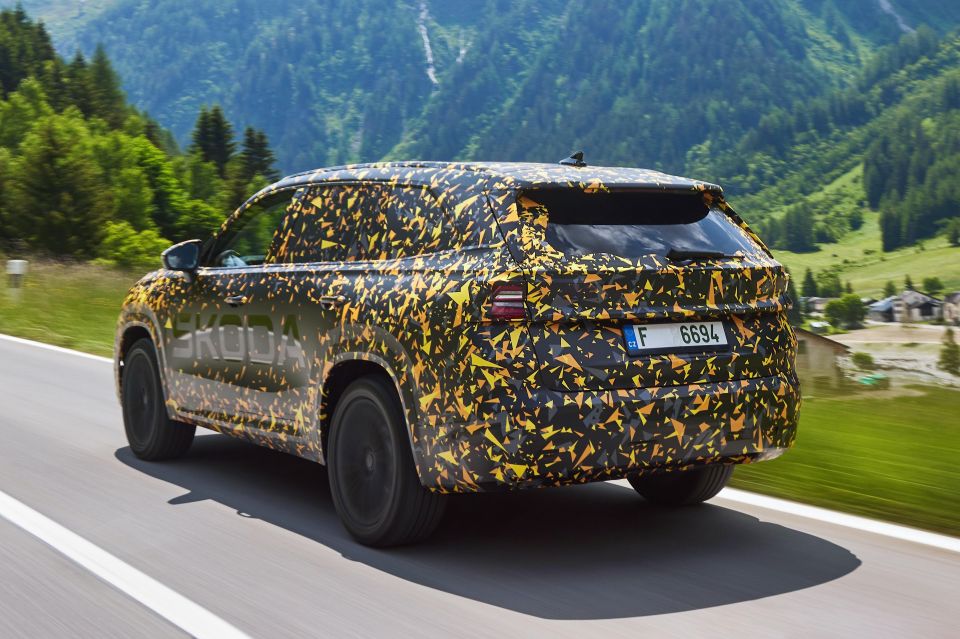
Skoda will offer five powertrain options for the Kodiaq in Europe, including the aforementioned 48V MHEV and PHEV options, alongside traditional petrol and diesel variants.
The entry-level 1.5 TSI turbo petrol engine boasts a fuel-saving 48V mild-hybrid system and produces 110kW of power.
Both the 1.5 TSI mHEV and 1.5 TSI iV plug-in hybrid (more below) run the more efficient Miller cycle and feature a turbocharger with variable turbine geometry – both designed to maximise fuel efficiency.
Further, the mild-hybrid also comes with the Volkswagen Group’s latest active cylinder technology, which can shut down up to two cylinders under low engine load to reduce fuel consumption.
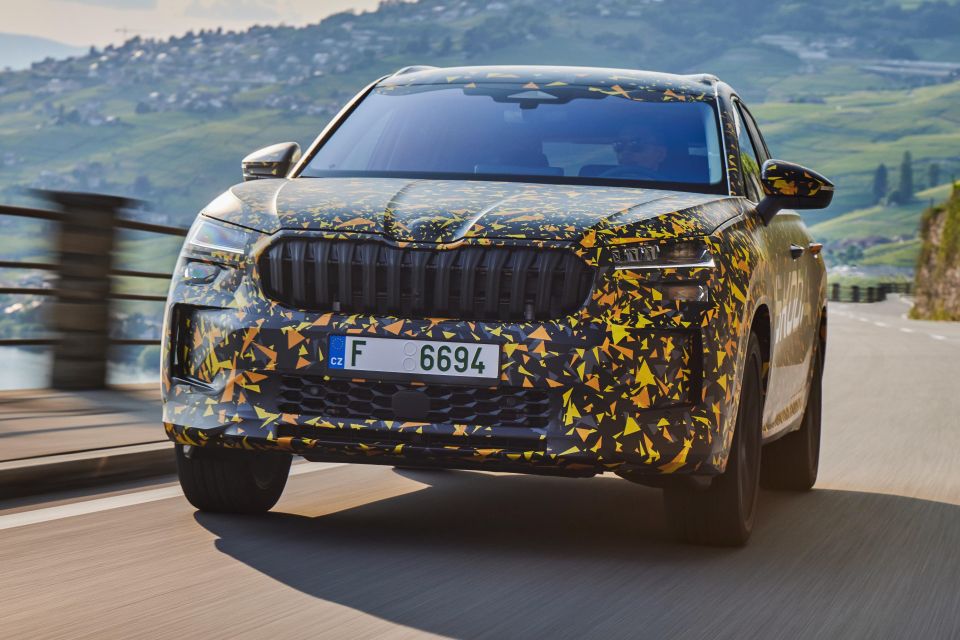
A higher-spec 2.0 TSI with 150kW will also be available with standard all-wheel drive. Both 1.5 TSI mHEV and 2.0 TSI engine variants are fitted as standard with seven-speed DSG dual-clutch automatic transmissions
Skoda will also offer a pair of turbo-diesel options in Europe, but it’s unclear whether they are on the cards for Australia.
Two versions of the VW Group’s 2.0 TDI four-cylinder oiler will be available, one with 110kW and FWD, along with a more powerful 142kW tune with all-wheel drive. Again, a seven-speed DSG is standard fitment for both.
Finally, the plug-in hybrid powertrain – which has been ruled out for Australia – teams the base 110kW 1.5 TSI petrol engine with an electric motor and 25.7kWh battery pack, quoting a system power output of 150kW. Drive is sent exclusively to the front wheels via a six-speed DSG auto.
Skoda says the new Kodiaq iV can travel “more than 100 kilometres” per charge, and supports 50kW DC fast charging.
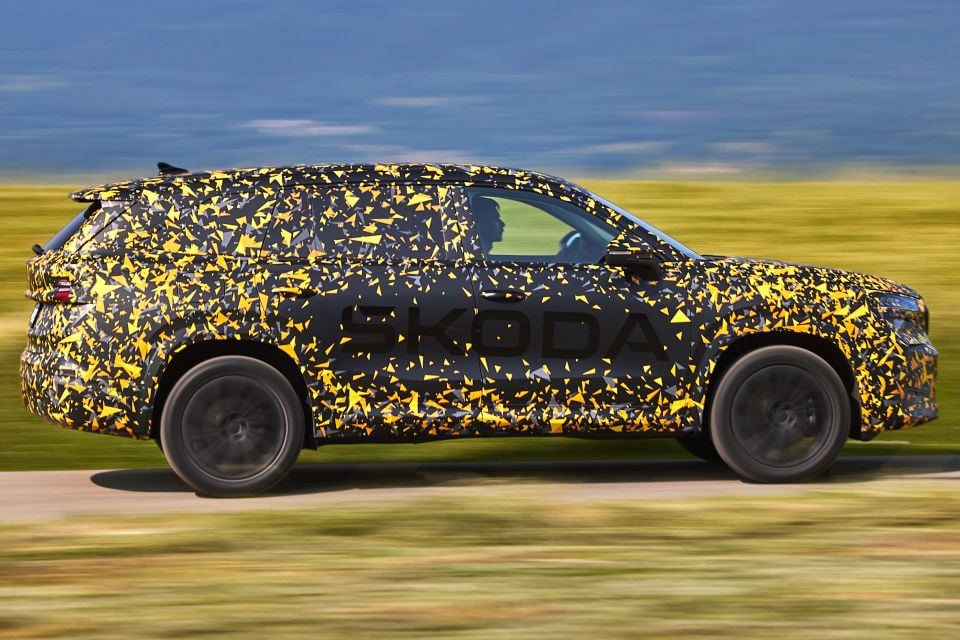
The design of the Kodiaq has been refreshed inside and out – though the supplied images only show the exterior of a camouflaged pre-production prototype.
Skoda will offer wheels ranging from 17- to 20-inches in diameter with a choice of seven designs. Matrix LED headlights will also be available.
Its new “sculptural” design language allows for a split-level headlight signature, a more prominent front grille which may offer illuminated edges like the Enyaq electric vehicle, and a new sharp crease just below the window line.
The Kodiaq will also include a new-generation of adaptive chassis control (DCC) – VW-speak for adaptive dampers.

The new Kodiaq is expected to move to the newer MQB Evo architecture like the latest Octavia.
The length of the large SUV has increased by 61mm, while an added 15mm headroom features in the third row.
Its revised measurements are quoted at 4758mm long, 1864mm wide, and 1657mm tall with a 2791mm wheelbase. Headroom in the third row is now 920mm.
Inside, the Kodiaq will offer a new 12.9-inch infotainment system and 10.25-inch Virtual Cockpit, along with an optional head-up display and a mix of physical and digital buttons.
An available dual-phone box allows cooling and fast charging for two phones at the same time.
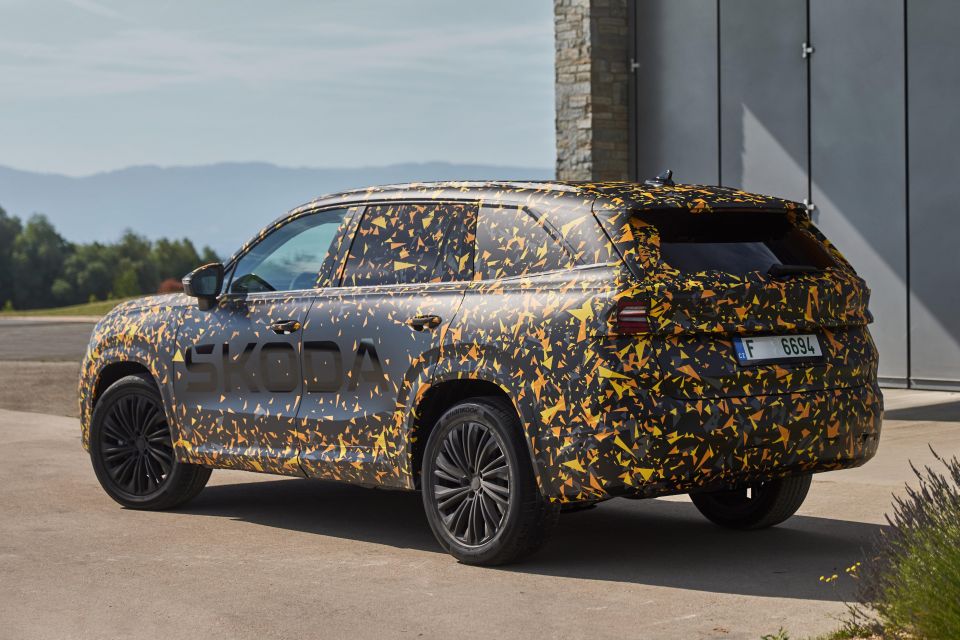
Skoda has introduced a whole suite of safety technologies including Crew Protect Assist – which automatically closes the windows and panoramic roof as well as activate the hazard lights and tighten the front seat belts in the event of an emergency.
As well as Emergency Assist, which provides drivers who may experience a medical episode, additional driving assistance to bring the vehicle to a complete stop and alert surrounding drivers.
Up to nine airbags will be offered depending on market and specification – including dual front, front-side, rear-side and curtain airbags in addition to a front-centre inflator.
A new remote parking feature will also be offered from 2024, allowing the vehicle to park autonomously in tight parking spaces via a smartphone app.
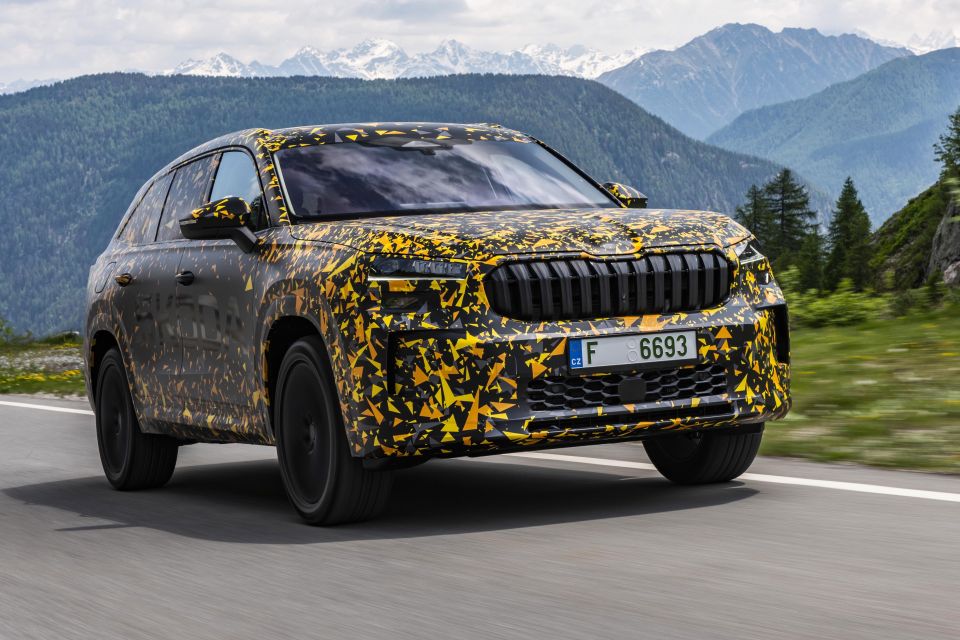
The Kodiaq will be manufactured alongside the existing Karoq at the company’s Kvasiny plant in the Czech Republic, with Skoda investing around 12 million euros (~A$19.5 million) in converting the production line for the new Kodiaq.
In 2022, the Kodiaq was Skoda’s second most popular SUV globally. In Australia, the brand registered 1555 units, with Skoda Australia boss Michael Irmer saying a bulk of Kodiaq sales were attributed to the flagship Kodiaq RS performance variant.
While Australia will miss out on the new Kodiaq iV plug-in hybrid, Skoda plans to jump headfirst into electric vehicles starting next year, with the Enyaq and Enyaq Coupe EVs due to arrive in local showrooms in the fourth quarter of 2024.
Stay tuned to CarExpert for our coverage of the all-new Kodiaq’s reveal in the coming months.
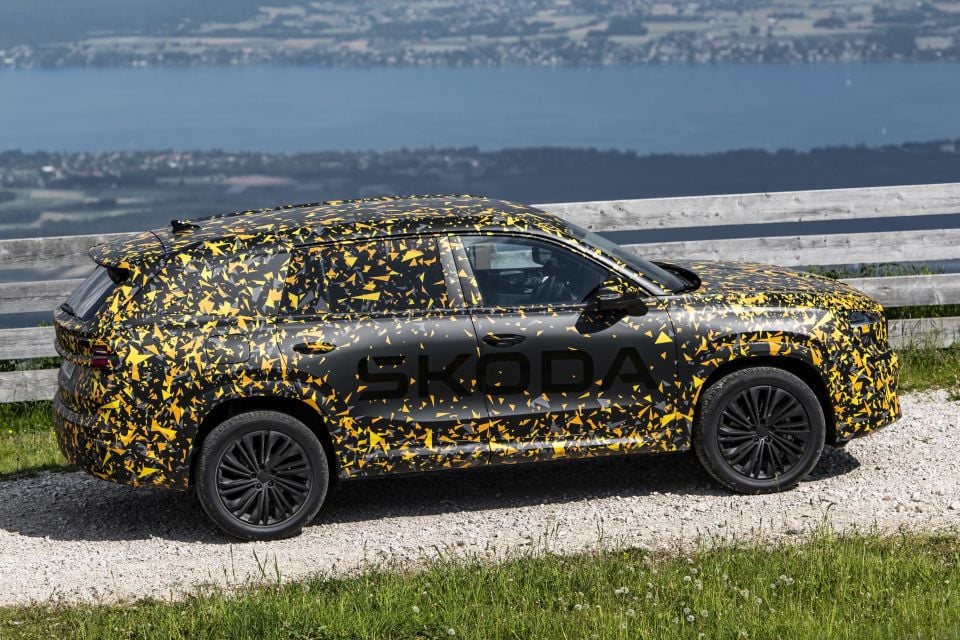
MORE: Everything Skoda Kodiaq
Where expert car reviews meet expert car buying – CarExpert gives you trusted advice, personalised service and real savings on your next new car.
Jade Credentino is an automotive journalist currently based in Melbourne, Australia. Jade has had a chance to review a variety of vehicles and particularly enjoys SUVs. She enjoys traveling and going on road trips exploring Australia.


Matt Campbell
3 Hours Ago


William Stopford
19 Hours Ago


Josh Nevett
20 Hours Ago


Ben Zachariah
1 Day Ago


CarExpert.com.au
2 Days Ago


Damion Smy
2 Days Ago